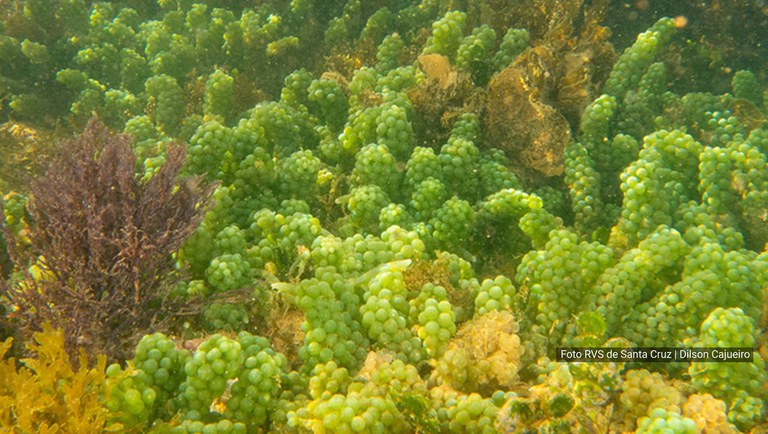Notícias
Marine life is now included in the Catalog of Plants in Brazilian Protected Areas

Two Conservation Units on the coast of the state of Espírito Santo are the first in the coastal-marine system to publish their lists in the Catalog of Plants of the Conservation Units of Brazil. The Algae Coast Environmental Protection Area ( APA Algae Coast ) and the Santa Cruz Wildlife Refuge ( RVS de Santa Cruz) are contiguous units, created on June 17, 2010, and are part of the Atlantic Forest/UNESCO Biosphere Reserve.
The APA Algae Coast is a sustainable use UC located in the central region of the Espírito Santo Continental Shelf, south of the mouth of the Rio Doce, in the municipalities of Aracruz, Fundão and Serra. Its 1149 km² include extensive banks of rhodoliths (calcareous nodules made up of crustose coralline algae), as well as sandbanks, beaches, mangroves and laterite reefs (which have a high concentration of iron in their composition) with tide pools.
Its list contains 248 species, 247 of which are macroalgae taxa and one angiosperm. The macroalgae are represented by 151 rhodophytes, 59 chlorophytes and 37 phaeophytes, which shows the great diversity found in the area. The APA Algae Coast is important for artisanal fishing and is under pressure from the disorganized occupation of the coastal zone.
The RVS de Santa Cruz is an integral protection UC on the coast of the municipality of Aracruz, surrounded by the APA Algae Coast. Its list includes 136 species distributed over its 177 km², 135 of which are macroalgae and one angiosperm. At least 122 of these taxa also occur in the APA Algae Coast. The macroalgae are represented by 71 rhodophytes, 31 chlorophytes and 33 phaeophytes. The researchers noted that 24 taxa recorded in the two PAs do not have specimens listed in herbaria.
Both UCs were significantly affected by the ore tailings transported by the Doce River to its mouth, from the collapse of the Fundão dam - the Mariana Disaster - which happened on November 5, 2015. For this reason, the researchers consider that it is essential to develop long-term studies and monitoring, focusing on the diversity of marine fauna and flora in order to improve understanding of the persistence of impacts and the environmental ability to
recovering.
In drawing up the lists, the collections of S.M.P.B. Guimarães (SP herbarium, of the Environmental Research Institute - IPA) and G.M. Amado-Filho and R.G. Bahia (RB herbarium, of the Rio de Janeiro Botanical Garden) were mainly used. The RB collection includes algae collected after the Mariana Disaster and its creation was supported by CNPq Research Productivity and Senior Postdoctoral scholarships. Part of the floristic inventories were carried out under the Aquatic Biodiversity Monitoring Program (FEST-RENOVA funding) and the Long-Term Ecological Research Program (PELD-Abrolhos).
The authors of the lists dedicated the work to the memory of Rio de Janeiro Botanical Garden researcher Gilberto Menezes Amado Filho (1959-2019) for his invaluable contribution to marine research in Brazil.